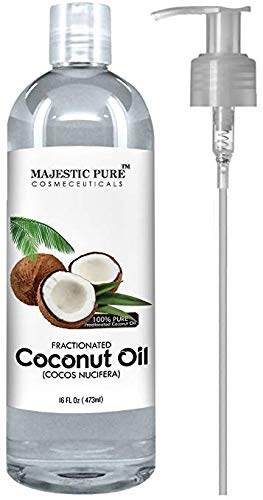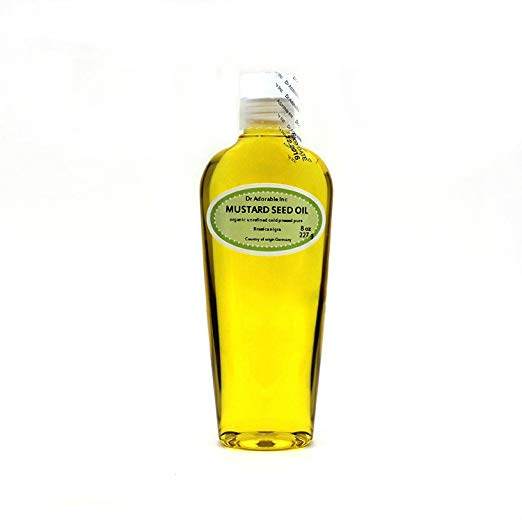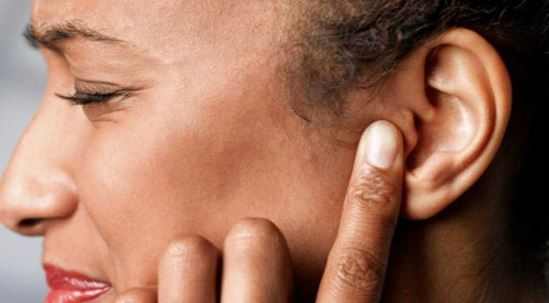A swollen ear canal can be painful and cause a lot of discomfort. The causes can range from a simple pimple in the ear to an infection. When the ear canal gets swollen shut, see a doctor immediately. Here are the causes of the outer ear canal swelling and how to treat with home remedies.
Swimmer’s ear (otitis externa) is a painful inflammation and infection of the ear canal. It occurs when the protective film that covers the ear canal (lipid layer) is removed.
This causes the ear canal to look red and swollen. The ear canal may be narrower than normal and is tender when the outside of the ear is gently pulled up and back. Read on to find out the causes, symptoms and remedies for this condition.
Swollen Ear Canal Causes – What Causes Swelling In Ear Canal?
A swelling in the ear canal can be caused by irritation, infections and even physical trauma or injuries to that section of the ear.
While some causes can be serious, others may clear on their own without need for treatment. Here are the causes of inflammation in the ear canal, followed by treatments and home remedies.
1. Pimple in Ear
Most often pimples inside ear, as well as pimples near the ears are not felt immediately. Only if they are touched when combing hair, they will hurt, as in this area skin is very sensitive.
Cold-related pimple in ear is also quite common. Especially dangerous are summer draughts, which immediately affect sweating skin with different kinds of acne. In winter cold pimples can affect those who do not recognize the necessity of headgear.
2. Ear drum Injuries
Many people don’t know that cleaning their ears with cotton swabs is a major cause of eardrum injuries. That’s because poking around in the ear canal too harshly can easily injure the eardrum’s fragile tissue, especially in young children, who have very narrow ear canals. (Tip: To clean wax build-up in the ears, opt for a wet washcloth and gently wipe outside the ear canal.)
But eardrums can be injured in lots of other ways, including:
Ear infections
An infection of the middle ear or inner ear (such as otitis media) can lead to pus or fluid buildup behind the eardrum, which can cause it to burst. This is a common cause of ruptured eardrums in children.
High or low altitudes (barotrauma)
Usually, the air pressure in the middle ear and the pressure in the environment are in balance. A sudden change in barometric pressure (such as during air travel, driving on a mountain road, or scuba diving) can be enough to rupture an eardrum.
Loud noises (acoustic trauma)
Although uncommon, loud noises (like an explosion) can sometimes produce sound waves that are strong enough to damage the ear canal. Any loud noise also can cause temporary or permanent hearing damage to the cochlea and lead to hearing loss.
Foreign objects
Besides cotton swabs, hairpins and other small objects that kids can fit in the ear canal can cause injuries and subsequently a swollen ear canal.
3. Allergies
Allergies primarily affect the middle ear. If this tube is clogged with mucus or its opening is blocked by allergy swelling, then pressure and fluid can build up in the middle ear. This gives us the sensation of being down a well, having the need to “pop” our ears frequently, and can result in a swollen ear canal which in turn causes diminished hearing. Fluid build-up also creates a good environment for infection to occur.
Middle ear infections, called otitis media or OM, occur commonly in early childhood and are a frequent reason for antibiotic treatment and missed school days. Allergies are a well recognized cause for recurrent OM and kids who have more than their share of middle ear infections should be allergy tested.
Disorders affecting the inner ear, such as Meniere’s disease, may have an allergic component as well. Patients who fail to respond to conservative therapy may benefit from allergy desensitization, though evidence to support this comes largely from case series and anecdotal evidence.
4. Temporo-Mandibular Joint Pain
In most patients, pain associated with the TMJ is a result of displacement of the cartilage disc that causes pressure and stretching of the associated sensory nerves. The popping or clicking occurs when the disk snaps into place when the jaw moves. In addition, the chewing muscles may spasm, not function efficiently, and cause pain, a swollen ear canal and tenderness.
What are the symptoms?
- Ear pain
- Sore jaw muscles
- Temple/cheek pain
- Jaw popping/clicking
- Locking of the jaw
- Difficulty in opening the mouth fully
- Frequent head/neck aches
The pain may be sharp and searing, occurring each time you swallow, yawn, talk, or chew, or it may be dull and constant. It hurts over the joint, immediately in front of the ear, but pain can also radiate elsewhere.
It often causes spasms in the adjacent muscles that are attached to the bones of the skull, face, and jaws. Then pain can be felt at the side of the head (the temple), the cheek, the lower jaw, and the teeth.
A very common focus of pain is in the ear. Many patients come to the ear specialist quite convinced their pain is from an ear infection. When the earache is not associated with a hearing loss and the eardrum looks normal, the doctor will consider the possibility that the pain comes from TMJ.
5. Cholesteatoma and swollen ear canal
An abnormal skin growth in the middle ear behind the eardrum is called cholesteatoma. Repeated infections and/or a tear or pulling inward of the eardrum can allow skin into the middle ear.
A cholesteatoma usually occurs because of poor eustachian tube function, a swollen ear canal as well as infection in the middle ear. The eustachian tube conveys air from the back of the nose into the middle ear to equalize ear pressure (clear the ears).
When the eustachian tubes work poorly, perhaps due to allergy, a cold, or sinusitis, the air in the middle ear is absorbed by the body, creating a partial vacuum in the ear.
The vacuum pressure sucks in a pouch or sac by stretching the eardrum, especially areas weakened by previous infections. This can develop into a sac and become a cholesteatoma.
6. Meniere’s Disease
Meniere’s disease is a disorder of the inner ear that causes episodes in which you feel as if you’re spinning (vertigo).
This is accompanied with fluctuating hearing loss with a progressive, ultimately permanent loss of hearing, ringing in the ear (tinnitus), and sometimes a feeling of fullness or pressure in your ear.
In most cases, Meniere’s disease affects only one ear.
7. Glue Ear and swelling
Glue ear is a common childhood condition where the middle ear becomes filled with fluid. The medical term for glue ear is otitis media with effusion (OME).
The middle ear is the part of the ear directly behind the eardrum. It contains three tiny bones that carry sound vibrations from the eardrum to the inner ear.
The build-up of fluid associated with glue ear prevents these bones moving freely, which affects hearing because it means they can’t pass sound vibrations to the inner ear.
It’s thought that problems with the Eustachian tube may be caused by things like a previous ear infection, smoke irritation or allergies. Glue ear isn’t caused by a build-up of ear wax, or by getting water in the ear after swimming or showering.
Other factors that are also thought to increase the risk of getting glue ear include:
- growing up in a household where adults smoke.
- being bottlefed rather than breastfed as a baby.
- having siblings (brothers and sisters) who’ve had the condition.
Symptoms of a Swollen Ear Canal
When one experiences a swelling inside the ear canal, it can be quite uncomfortable. The symptoms of a swollen ear canal include:
- ear pain,
- fullness in the ear,
- hearing loss,
- ringing in the ear,
- discharge from the ear,
- nausea,
- vomiting
Symptoms may follow a respiratory infection such as the common cold.
Discharge from the ear canal is often caused by the infection known as swimmer’s ear (otitis externa). A painful ear with decreased hearing is often the result of otitis media, an middle ear infection
Otitis media is often associated with an upper respiratory tract infection such as a common cold. A raised temperature often accompanies the infection.
Pain is caused by a build-up of fluid and pus in the middle ear, which can also cause temporary hearing loss.
Very young children may become irritable and have feeding problems; older children will complain of pain and a feeling of fullness in the ear. The following are common symptoms of otitis externa:
- Itching, and a feeling of fullness inside the ear – usually the first sign of infection
- Swelling of the ear canal
- Watery discharge from the ear
- Severe pain and tenderness in the ear – especially when moving the head and jaw, or gently pulling the earlobe. Unlike a middle ear infection (otitis media), the pain of an ear canal inflammation or infection is worse when you chew, when you press on the “tag” in front of the ear, or when you wiggle your earlobe. The pain also often worsens when the ear starts discharging.
- A foul-smelling, yellowish discharge from the ear.
- Temporarily muffled hearing (caused by blockage of the ear canal).
- Swelling shut of the ear canal and swelling of the side of the face.
- Enlarged neck glands – these may make it difficult to open the jaw.
Ear Canal Swollen Shut
Ear canal infection (otitis externa) is an inflammation or infection of the outer ear canal, the passage leading from the external ear to the eardrum. It may develop when water, dirt or other debris gets into the ear canal.
Since it is often associated with excess water in the ear canal, and frequently occurs in children and young adults who swim a great deal, the common name for this inflammation is “swimmer’s ear”.
When the ear gets an infection, you will have a swollen ear canal and you will experience a swelling of the side of the face.
When the eardrum is red and bulging, with fluid or pus behind the eardrum, often associated with pain and fever, this is called “acute otitis media.” “Glue Ear” often follows “Acute Otitis Media” or may occur on its own.
Fluid is present behind the eardrum, but there is no fever, and the eardrum is not inflamed or bulging and you may not experience pain. In some instances, the eardrum is actually retracted inwards to varying degrees.
Outer Ear Canal Swelling
Outer ear canal swelling can be caused by the following:
- Moisture in the ear fosters fungal and certain kinds of bacterial infections. Swimming, especially in contaminated water, thus increases the risk of otitis externa. Showering, washing your hair, or getting caught in the rain is less likely to raise risk.
- Skin disorders, such as eczema or seborrheic dermatitis, may cause inflammation.
- Objects inserted into the ear, like cotton swabs, may irritate the skin or cause small cuts that are vulnerable to infection.
- Inadequate production of earwax renders the ear more vulnerable to infection.
- Earwax removers, hair dyes, shampoos, hairsprays, or chlorinated water may irritate the ear canal.
See also:
- 10 Best Earwax Removal Kits & Tools Reviewed
- Painful Pimple on Earlobe, Causes, Won’t Go Away and How To Get Rid
How to Treat a Swollen Ear Canal
- Over-the-counter pain relievers may be taken. (Children should take acetaminophen, not aspirin.)
- Your doctor may use a small suction device to remove excess fluid and pus from the ear canal.
- Topical antibiotics or antifungal ear drops may be prescribed to treat infection, in addition to corticosteroid drops to reduce inflammation. A spongelike wick may be inserted into the ear to allow medication to travel deeply into the ear canal. Oral antibiotics may be given for severe infection.
- Surgical removal of dead tissue may be required to treat malignant otitis externa.
- Codeine or narcotics may be prescribed to relieve severe pain.
- After symptoms disappear, avoid getting water into the ear canal for up to three weeks; protect your ears when showering and avoid swimming.
- In the event of recurrence, keep a supply of the prescription ear drops on hand to ease symptoms.
Home Remedies for a swelling ear canal
What can you do at home to get rid of the swelling in the ear canal section? Most medical treatments can get rid of inflammation, bacteria and fungal infections in the ear.
However, if the infection is not severe, you can treat it at home with these home remedies.
Summary: supplies that help treating swollen ear canal at home
| IMAGE | PRODUCT | DETAILS | |
|---|---|---|---|
 |
|
Check price | |
 |
|
Check price | |
 |
|
Check price |
1. Salt remedy for ear pain and swelling
Salt is probably the most readily available home remedy to relieve the swelling inside the ear canal. Here’s how to apply salt to heal the swelling and inflammation of the ear.
- Heat up one cup of salt on a pan over low heat for a few minutes.
- Place the hot salt on a cloth and seal the open end with rubber band (or tie a knot).
- When it is bearably hot, lay down and put the cloth on the affected ear for 5 to 10 minutes.
- Repeat this remedy daily as many times as needed. The heat generated from the sock will help draw out fluid from the ear and relieve swelling and pain.
As an alternative, you can use one cup of rice in the same manner described above.
2. Garlic for infected ears
Garlic has antimicrobial properties and natural pain relieving qualities, making it highly effective in the treatment of ear infections. There are a few ways to use garlic as a home treatment.
- Make garlic oil by cooking two garlic cloves in two tablespoons of sesame oil or mustard oil until it turns blackish. You can also buy one with Glass Dropper on Amazon
- Strain the solution.
- When it is bearably hot, use two to four drops of this oil in the swollen ear canal as ear drops.
Alternatively, you can also boil two or three fresh garlic cloves in water for five minutes, then crush them and add some salt.
Put the mixture in a clean cloth and place it against the affected ear. Consuming two to three cloves of raw garlic daily also helps speed up the healing process.
3. Basil to treat earache at home
You can also use holy basil to treat minor earache and ear infections. It can relieve ear pain fast as well as reduce infection.
- Crush four to five fresh holy basil leaves gently to extract the juice.
- Apply the basil juice on or around the infected ear.
- Avoid getting the juice in the swollen ear canal.
- You can also mix a few drops of holy basil oil with an equal amount of carrier oil like coconut oil.
- Soak a cotton ball in the mixture and gently wipe just inside the ear, around the outer edge and behind the ear.
- Repeat the process twice daily.
4. Apple Cider Vinegar
To get rid of the fungus that may be causing the ear infection, apple cider vinegar is a good option due to its antifungal properties.
- Mix one part apple cider vinegar with an equal amount of water or alcohol.
- Soak a cotton ball in the solution.
- Put the cotton ball in your ear like a plug and leave it for about five minutes.
- Remove the cotton ball and lay down on your opposite side to drain the liquid from the swollen ear canal.
- Use a hair dryer to dry your ear as much as possible.
If apple cider vinegar is not available, you can use white vinegar. If the cause of the ear infection is in the Eustachian tubes, try gargling with apple cider vinegar.
5. Use olive oil to relieve swelling in the ear
One of the main causes of a swollen ear canal and a subsequent ear infection is wax in the ear catching some fungal or bacterial growth leading to a blockage in the Eustachian tubes. You can easily clear the obstruction with the help of olive oil.
- Warm some olive oil slightly.
- Put a few drops of the warm oil into the infected ear. The oil will cause the wax to soften.
- Remove the infected wax with cotton-tipped swabs. Be careful not to put the swab too far in the ear or you might damage the eardrum.
- Use mustard oil for the procedure as an alternative cure. You can get the top quality mustard oil from on Amazon
6. Warm water bottle remedy
As soon as possible, apply some heat to the ear near the swollen ear canal. This will quickly relieve some of the pain and will also prevent micro-organism infestation.
- Press a warm water bottle or heating pad against the ear.
- You can also use a warm compress.
- Dip a clean washcloth in lukewarm water, ring out the excess water and then place the washcloth on the infected ear.
- Do not apply heat to the ear for long periods of time.
- Start with five minutes, remove the heat for a while and then repeat the process as needed.
To relieve the pain, you can also use a warm wash cloth pressed on the ear with pain or a heat washcloth on low.
Sources and references
- WebMD: Allergies
- Health Communities: Outer Ear Infections.
- Mayo Clinic: Swimmers Ear Definition.
- Mayo Clinic: Meniere’s Disease Definition.

